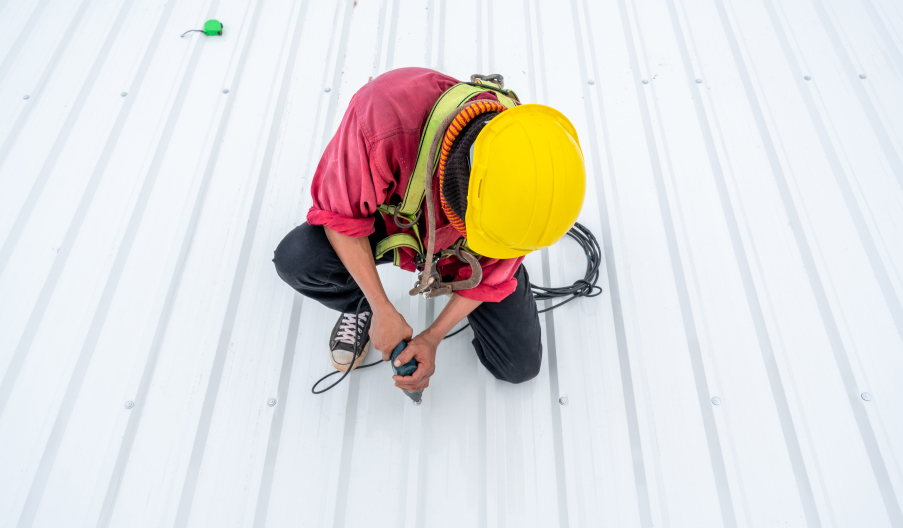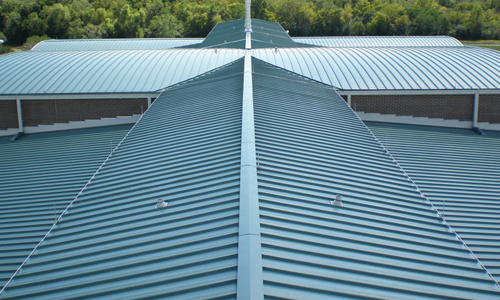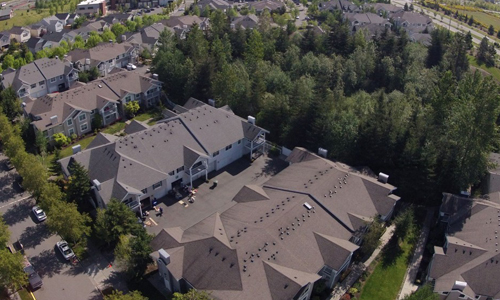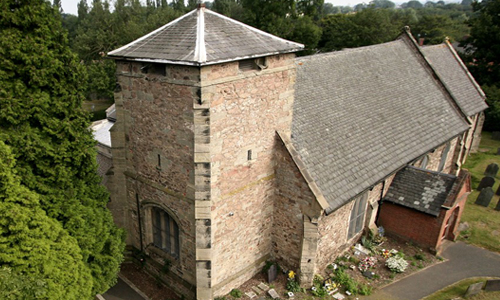Steep-Slope Roofing
WATER SHEDDING
Roof Types
The following roof coverings are commonly used for low-slope roofs. These roofs are considered to be water impermeable or weather proof. Low-Slope roof membranes consist of three components; a weatherproofing layer, reinforcing layer and surfacing. Roofs installed at a 3/12 pitch or less are considered to be “low slope.”


METAL PANELS
Hydrokinetic Metal Roofs come in two different forms. The first kind is known as an R-Panel (screw down) roof. The second type is known as a Standing-Seam system. Both have their advantages and disadvantages. The primary difference is R-Panel is less expensive to install and Standing-Seam is less likely to require major repairs. R-Panel roofs will require the screws to be replaced every 10 – 15 years with larger screws, because thermal cycling will cause the pilot holes to slowly expand as they rub against the screws. Standing-Seam roofs do not require this type of maintenance, as the fastening system is hidden.

Pros
• Longevity
• Aesthetically pleasing
• Low Maintenance (Standing-Seam)
• Can be installed over most types of wood decks
ASPHALT SHINGLES
Shingles are the most common type of roof found in the US. They are finberglass-reinforced mats soaked in asphalt and surfaced with granules. The granules are considered the life of the shingle, as they protect the mat from debris and UV rays. Shingles are available in 3-Tab, Architectural & Designer styles.

Pros
• Reliable and proven dependability
• Speed of install
• Low price point
• Can be installed over most types of wood decks


SLATE
Slate is one of the most time tested roof solutions in the world, and is considered a family heirloom to many who have had the same roof on their stylish house/building. Slates aesthetic appeal is unrivaled, as is its longevity. Many slate roofs have been known to last more than a century. This class of roof comes with a high price point and the need for excellent structural support, however. Due to these reasons, many do not find slate to be a viable option for their property.

Pros
• Beauty & Uniqueness
• A true “lifetime” roof
• Highly resistant to storm damage
• Requires little maintenance

